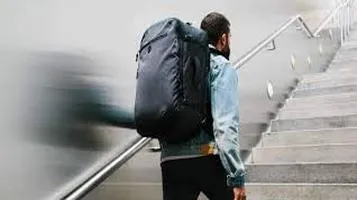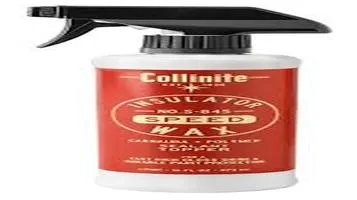Review of Safety Gear: Protection and Peace of Mind
Safety gear refers to specialized equipment and clothing designed to protect individuals from injury or harm in various environments. It is essential across numerous industries, including construction, healthcare, manufacturing, and sports, to ensure the well-being of workers and participants. Common types of safety gear include helmets, gloves, goggles, ear protection, face shields, high-visibility clothing, and protective footwear. Each piece serves a specific purpose, such as safeguarding against impact, exposure to harmful substances, or extreme temperatures. The use of safety gear is often mandated by regulations and standards to minimize risks and prevent accidents. By providing a barrier between the individual and potential hazards, safety gear plays a crucial role in promoting a safe and secure working or recreational environment.

Safety gear is an essential aspect of many professions and recreational activities, providing vital protection against injuries and hazards. Whether it's for construction workers, healthcare professionals, athletes, or even everyday cyclists, the right safety gear can make a significant difference in ensuring well-being and preventing accidents. This review will delve into various types of safety gear, evaluating their effectiveness, design, comfort, and overall value.
Types of Safety Gear
Safety gear encompasses a wide range of equipment, each tailored to specific needs and environments. Common categories include:
1. Personal Protective Equipment (PPE):
- Helmets: Crucial for protecting the head from impacts, helmets are used in construction, cycling, motorcycling, and various sports. Modern helmets often feature advanced materials like carbon fiber and incorporate technologies such as MIPS (Multi-directional Impact Protection System) to enhance safety.
- Gloves: Depending on the profession, gloves can protect against cuts, burns, chemicals, and infections. For instance, construction gloves are typically reinforced with materials like Kevlar, while medical gloves are designed for sterility and dexterity.
- Eye Protection: Safety goggles and face shields protect the eyes from debris, chemicals, and radiation. Innovations like anti-fog coatings and adjustable fittings have significantly improved their usability.
- Hearing Protection: Earplugs and earmuffs are essential in environments with high noise levels, such as factories and construction sites, to prevent hearing loss.
- Respiratory Protection: Masks and respirators filter harmful particles and gases, crucial for workers exposed to dust, chemicals, or infectious agents.
- Footwear: Safety boots with steel toes, non-slip soles, and puncture-resistant materials are fundamental in many industries to prevent foot injuries.
2. High-Visibility Clothing:
- Essential for workers in low-light or high-traffic environments, high-visibility clothing includes vests, jackets, and pants with reflective strips. The materials used are often lightweight and breathable, ensuring comfort while maintaining visibility.
3. Fall Protection Gear:
- For those working at heights, harnesses, lanyards, and anchor points are crucial. These systems are designed to arrest falls and distribute the force to minimize injury.
Effectiveness
The effectiveness of safety gear is its most critical attribute. High-quality safety gear must meet industry standards and certifications to ensure it provides adequate protection. For example, helmets should meet standards like ANSI Z89.1 or EN 397, while gloves might adhere to EN 388 for cut resistance.
In practice, the effectiveness of safety gear can often be a matter of life and death. Real-world incidents consistently demonstrate that properly used and maintained safety gear can prevent severe injuries and fatalities. However, effectiveness also depends on proper fit and usage. Ill-fitting gear can be almost as dangerous as no gear at all, as it can fail at critical moments or impede the user’s ability to perform tasks safely.
Design and Comfort
The design of safety gear has come a long way from the bulky and uncomfortable equipment of the past. Modern safety gear integrates ergonomic designs with advanced materials to enhance comfort and usability. For instance, contemporary safety harnesses distribute weight more evenly and include padding to reduce pressure points, making them more comfortable for extended wear.
Helmets now often feature ventilation systems and adjustable straps to ensure a snug fit without causing discomfort. Gloves are designed with flexible materials that allow for dexterity while still providing robust protection. In environments requiring long hours of gear usage, these design improvements are not merely conveniences but necessities that ensure workers can remain protected without suffering fatigue or discomfort.
Value
The value of safety gear is best evaluated by considering its cost relative to the protection it offers. While high-quality safety gear can be expensive, the cost of injuries, both in terms of medical bills and lost productivity, often far outweighs the initial investment. Moreover, many employers are legally required to provide suitable safety gear, making it an unavoidable expense.
In assessing value, it’s also essential to consider durability and maintenance. High-quality safety gear typically lasts longer and requires less frequent replacement, providing better long-term value. Additionally, some gear, such as reusable respirators, can be more economical over time compared to disposable options.
Conclusion
Safety gear is an indispensable component of workplace safety and recreational activities, offering protection and peace of mind. Its effectiveness, bolstered by rigorous standards and innovative designs, cannot be overstated. The advancements in comfort and usability ensure that users are more likely to wear their gear consistently, further enhancing safety outcomes.
While the initial cost can be a consideration, the long-term benefits and potential savings from avoided injuries make high-quality safety gear a wise investment. In conclusion, safety gear is not merely a regulatory requirement or a precaution; it is an essential aspect of responsible work and play, safeguarding lives and enabling people to perform their activities with confidence and security.






